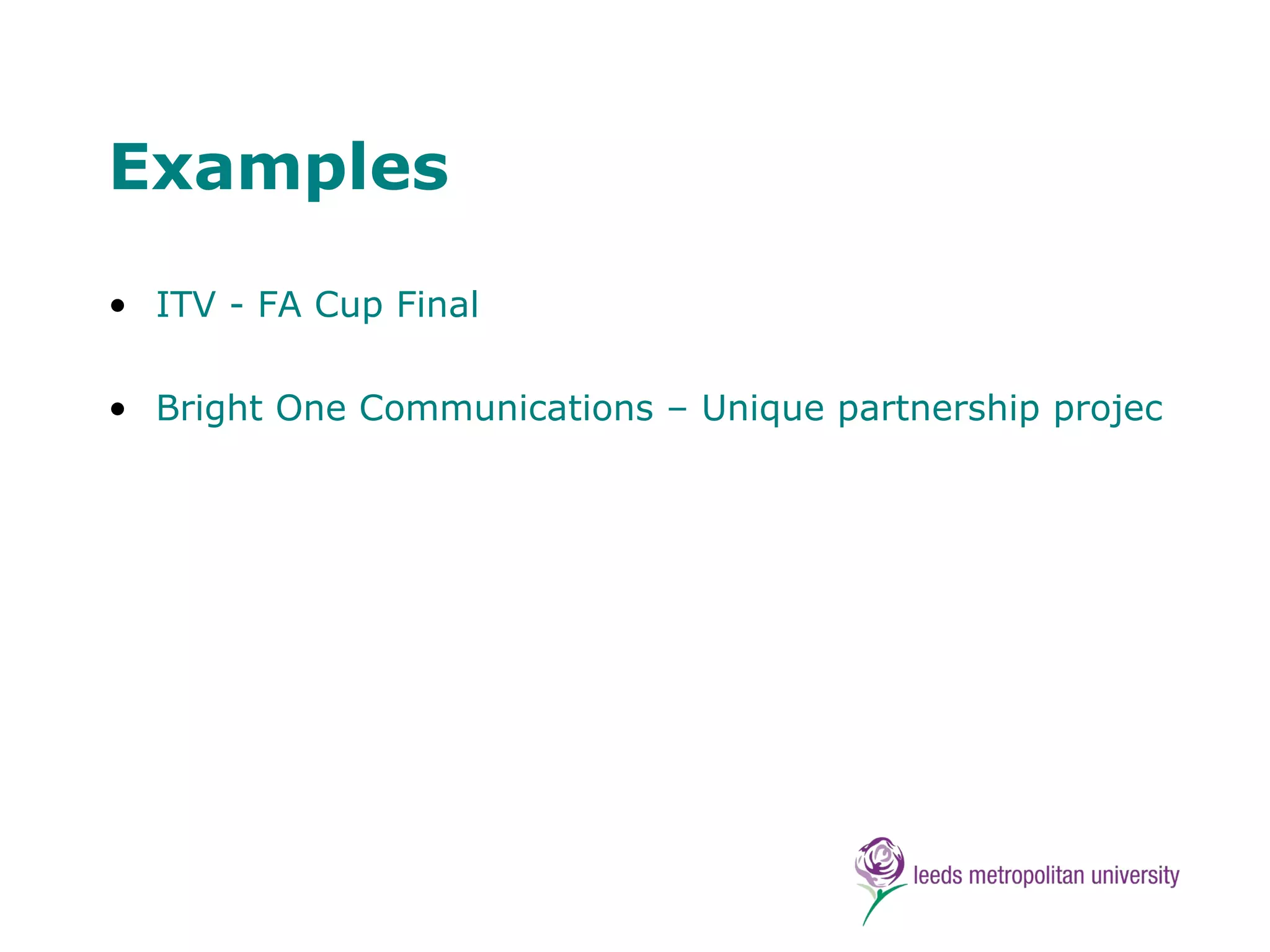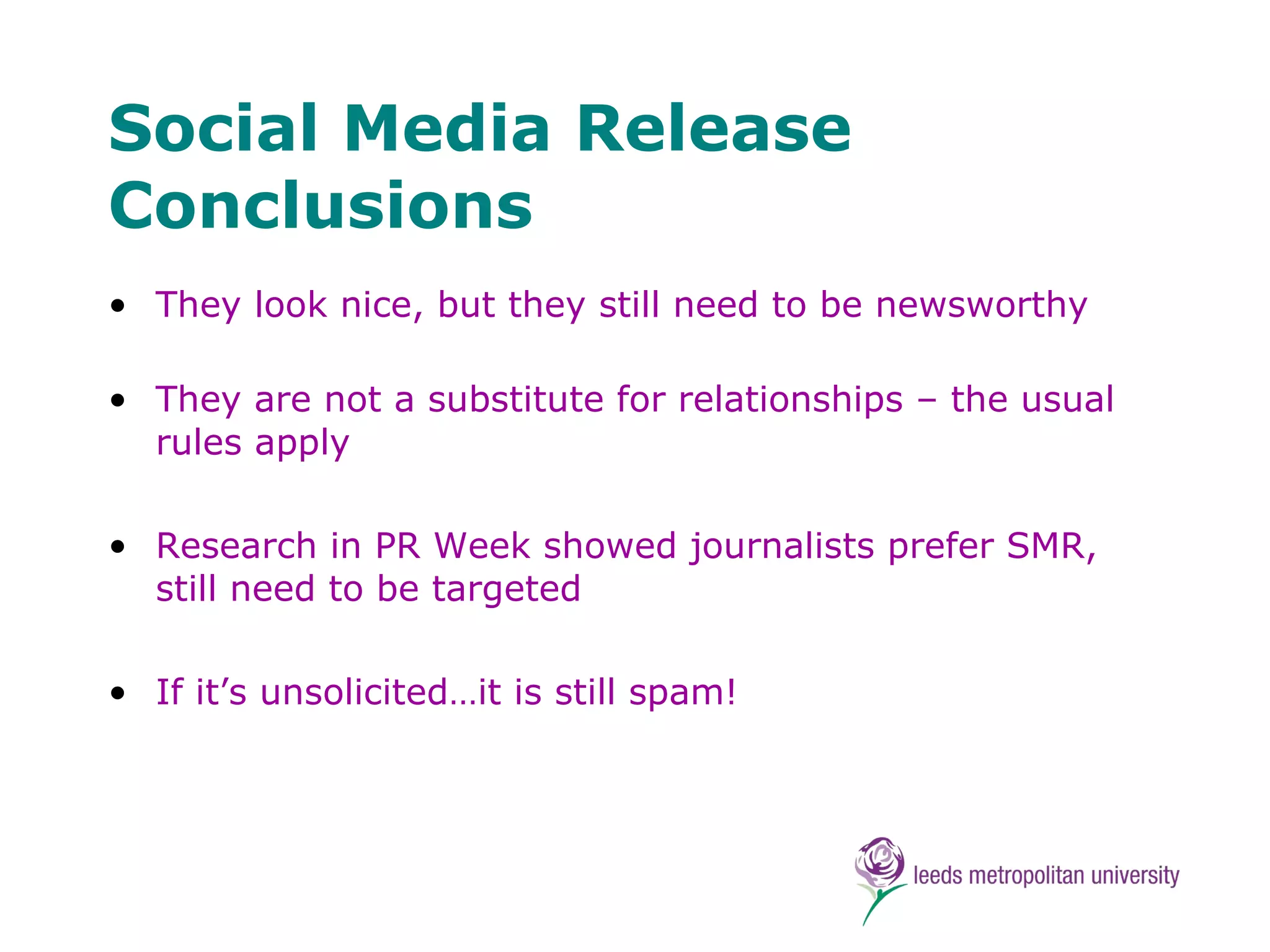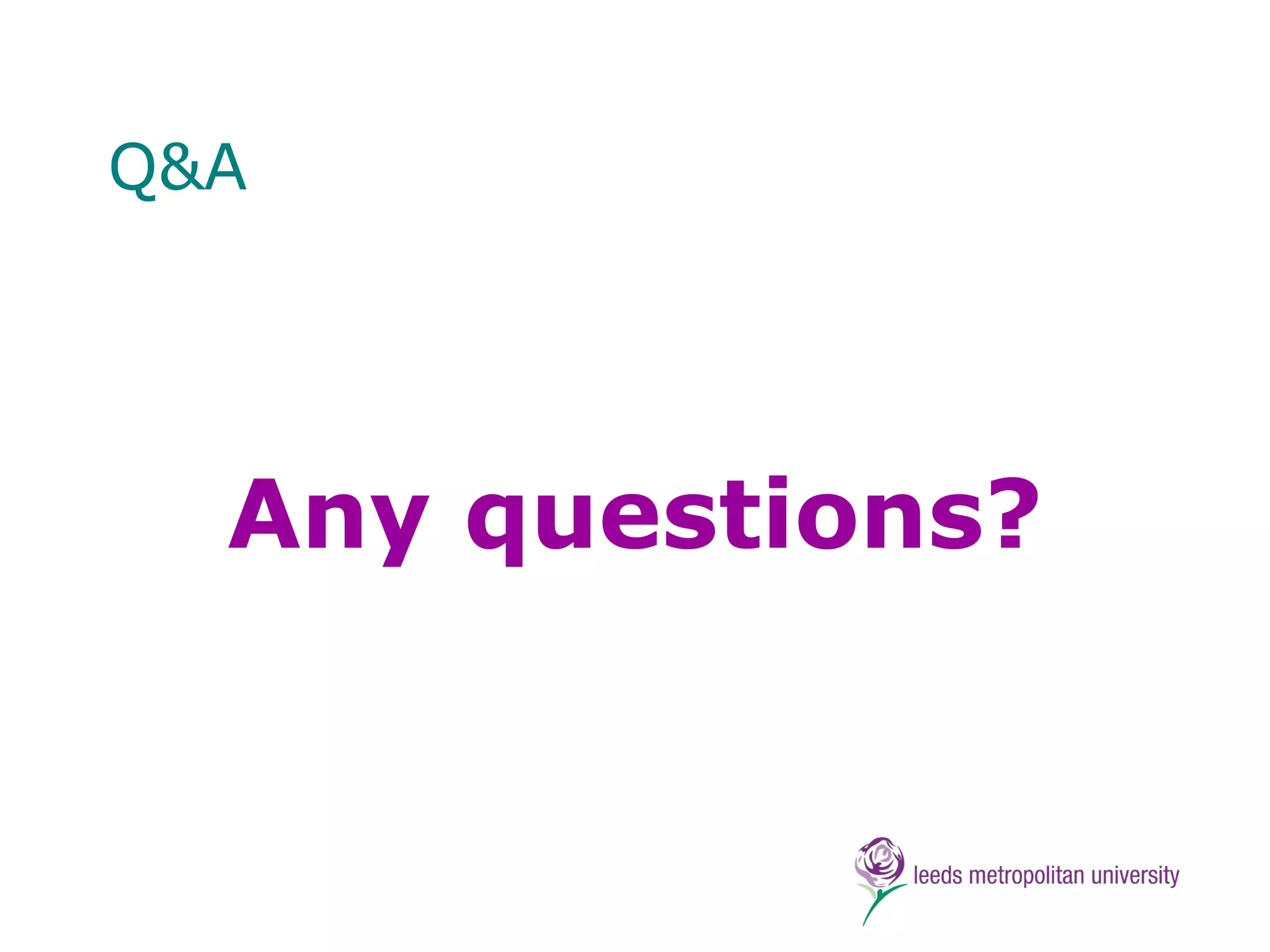The document discusses the evolving landscape of social media, defining it as a platform for user-generated content and emphasizing its characteristics such as participation and community. It highlights the benefits and pitfalls, including rapid audience reach and potential reputational damage, while providing case studies of both successful and failed social media endeavors. Furthermore, it critiques traditional press releases, advocating for the development of social media releases that incorporate multimedia and foster better communication with journalists and bloggers.


































![Thank you Contact details [email_address] www.twitter.com/bencotton www.socialwebthing.com www.linkedin.com/in/bencotton End](https://image.slidesharecdn.com/practicalissuesinsocialmedia-100125165140-phpapp02/75/Practical-Issues-in-Social-Media-35-2048.jpg)